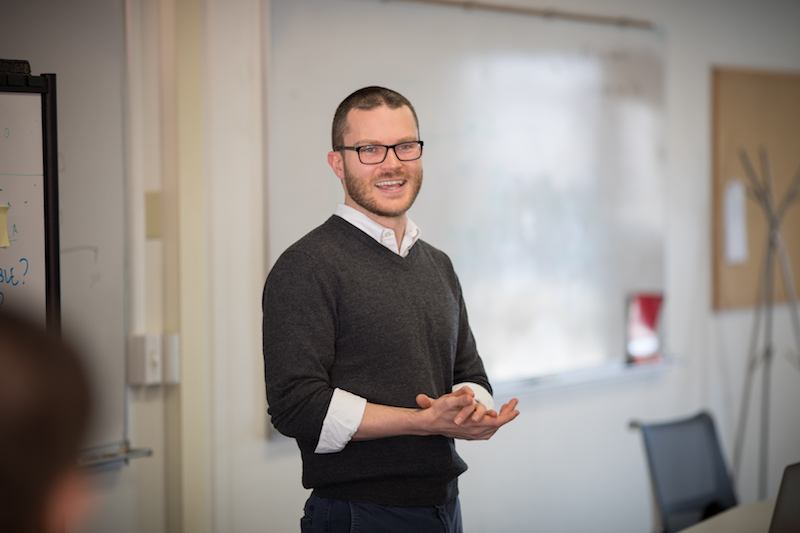Designing for a brighter future
New faculty profile: Christopher McComb (’14, ’16)
Kayla Valentine
Aug 3, 2021
Before infrastructure, machinery, technology, and inventions reach humanity, they go through a vigorous process that many of us often forget about: engineering design. Everything, at one point in time, was subject to the process of conceiving an idea and mapping out the best methods to make it real.
“Design gives us tools to be affectively generative; it gives us approaches for searching broadly through different solutions and then narrowing down to the best one,” said Christopher McComb, a Carnegie Mellon University alumnus who will be joining the faculty in the Department of Mechanical Engineering this fall.

Source: Pennsylvania State University
McComb joins Carnegie Mellon University’s mechanical engineering faculty in fall 2021.
“It gives us a process and approach for something that seems a little intangible and pretty difficult. If you’re trying to create something that has never been created before, where do you start? Design gives you an answer to that question.”
As a Carnegie Mellon graduate student, McComb’s thesis topic explored simulating design teams. His first project examined the hypothesis that giving teams certain instructions would help make them more adaptive to changes in their problem statements. Though not meeting his initial expectations, he used these results to compare low and high performing teams, and learned valuable information on how people work together.
He is excited to return to Carnegie Mellon and take part in the interdisciplinary collaboration, for which it is well-known. As a student, he worked with KickStart, a non-profit dedicated to helping people escape poverty, while also being cost-effective and sustainable. Their goal was to optimize manual water pumps for a wider audience, creating a variety of pumps for different users, rather than a singular model, showing the importance of design and continued improvement.
If you’re trying to create something that has never been created before, where do you start?
Christopher McComb, Associate Professor, Mechanical Engineering, Carnegie Mellon University
McComb joins us after working at the Pennsylvania State University as an assistant professor of engineering design. In the past six years, he has received nine honors and awards for his work in design research. His research mainly focuses on better understanding collaborative work and using machine-learning to enhance designers’ abilities. Combining these concepts, he examines how to develop successful human-machine teams.
“We are using [computational power] to give designers superpowers. And that’s the thing that is so exciting for me, because we are making them into superheroes. We are giving them these design-superpowers so they can go and do amazing things that help a lot of people,” said McComb.
Above all, however, he looks forward to incorporating the power of design into his classroom—not only through teaching the concept, but also by applying human-centered design, and creating a student-centered learning environment. As a Carnegie Mellon student himself, he took part in the Future Faculty Program, where he created the design practicum, which emphasizes developing a growth mindset through hands-on collaborative evaluation.
We are using [computational power] to give designers superpowers... that’s the thing that is so exciting for me....
Christopher McComb, Associate Professor, Mechanical Engineering, Carnegie Mellon University
“When we create new things, we put the human at the center of it, and then design the product around them—to meet their needs, to meet their desires and wants. I take a similar approach to teaching. I place the student at the center of the experience and try to design education, and design the class, around my students.”
As a professor at Carnegie Mellon, McComb plans to fill the gaps in engineering design. Despite existing for the sake of fulfilling human need or desire, he feels that a missing part of the equation remains: how to comprehend, interpret, and design for each unique person. For McComb, this means understanding the user group and trying to meet users at their level. This, he believes, holds high importance, whether an engineer is designing water pumps or next-generation AI teammates.
McComb earned his dual bachelor’s degree in civil and mechanical engineering from California State University, Fresno in 2012. He earned his master’s degree in mechanical engineering in 2014 and his Ph.D. in mechanical engineering 2016, both from Carnegie Mellon University.
Media contact: Lisa Kulick, lkulick@andrew.cmu.edu